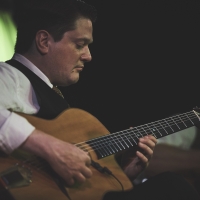DjangoBooks.com
Welcome to our Community!
Categories
- 20K All Categories
- 1.1K General
- 478 Welcome
- 59 Archtop Eddy's Corner
- 146 CD, DVD, and Concert Reviews
- 385 FAQ
- 26 Gypsy Jazz Italia
- 27 Photos
- 204 Gypsy Picking
- 21 Unaccompanied Django
- 15 Pearl Django Play-Along Vol.1
- 17 Gypsy Fire
- 45 Gypsy Rhythm
- 1.4K Gypsy Jazz University - Get Educated
- 131 Gypsy Jazz 101
- 228 Repertoire
- 222 History
- 708 Technique
- 51 Licks and Patterns
- 6 Daniel Givone Manouche Guitare Method Users Group
- 20 Eddie Lang Club
- 1.3K Gypsy Jazz Gear
- 804 Guitars, Strings, Picks, Amps, Pickups and Other Accessories
- 461 Classifieds
- 49 Recording
- 62 Other Instruments
- 18 Violin
- 5 Mandolin
- 22 Accordion
- 7 Bass
- 10 Woodwinds
- 348 Gypsy Jazz Events
- 143 North America
- 110 Europe
- 95 International









Comments
Of course, one must at least practice the scales/arps enough to know the locations of the various notes (1, 3, 5, 6, b7, M7, b9, etc) in all the various positions on the neck just for navigation purposes but beyond that the next step is learning (or inventing) phrases/vocabulary/ear training.
Soooo, I guess the bottom line is learn the arps but then focus on phrasing and licks???
Limehouse Blues however, that one bugs me. It's the only one so far I've transcribed with licks that I can't work out a logical way he might of played them!
I think to get a good gypsy sounding improv certain arpeggio fingerings are better than others, but equally if not more important is studying and really ingraining the ornamentation into the ears and fingers.
Django often opted for fingerings based on old habits and musical sound rather than convenience. Watch the J'attendrai video for instance. When he's playing the C major chord while playing rhythm, he doesn't just play any of the C6/9 voicings you'd expect him to play but he plays C major triad (after the F Fm section) that is rather awkward because of his handicap, yet he specifically does this voicing because it s what he hears in his head.
Transcribing Django's voicings over the years has revealed to me that whenever he could, Django always went for what was most musical and not what was his most efficient based on his handicap
www.denischang.com
www.dc-musicschool.com
I believe that learning short phrases that one can string together is like learning words that you can string together. Eventually one gets to being able to speak a cogent sentence.
Some will find it easier by memorizing licks and solos, some by leaning patterns. If one knows all the letters of the alphabet one still has to learn the words but spelling them right is easier.
Whether you come at this via patterns or licks, listen to and deeply learn the language, so when you say something, it actually has some meaning.